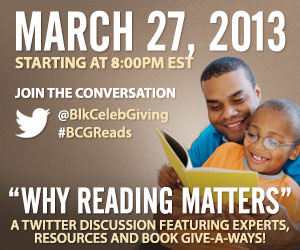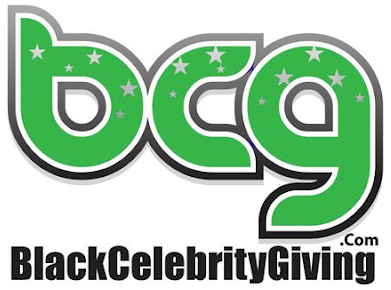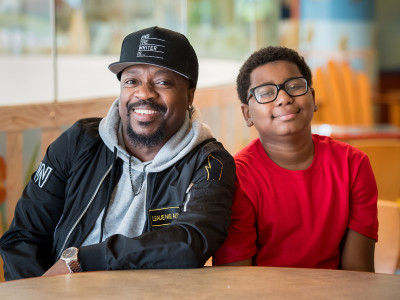 Reading, it’s a hobby but it’ also the gateway to a world of knowledge, something that many of us have been doing since we were youngsters. However the facts on literacy or shall I say illiteracy in America may surprise you and our communities are the most affected. My father has always stressed the importance of reading to me, his research in the field has him founding his own nonprofit around the cause. The program, which is in the works, is designed to get kids reading a book for at least five minutes a day in hopes that five minutes, will turn in to ten minutes and ten into 20.
Reading, it’s a hobby but it’ also the gateway to a world of knowledge, something that many of us have been doing since we were youngsters. However the facts on literacy or shall I say illiteracy in America may surprise you and our communities are the most affected. My father has always stressed the importance of reading to me, his research in the field has him founding his own nonprofit around the cause. The program, which is in the works, is designed to get kids reading a book for at least five minutes a day in hopes that five minutes, will turn in to ten minutes and ten into 20.
How many of us actually pick up a physical book or hey even an e-book for that matter everyday, not reading blogs, tweets, newspapers ect. but reading a book, the numbers will surprise you. Not being able to read is directly tied to statistics of poverty, the criminal justice system and so much more. And it’s not just reading that matters, but also comprehension and this is where the struggle is happening. On March 27th, BCG will host a Twitter chat surrounding the question Why Reading Matters, we invite you to join in the conversation at 8PM EST and use the hashtag #BCGReads. Below are 10 facts about literacy in America you may or may not know, spread the word and join us on March 27th!
- 42 Million American adults can not read.
- 50 Million adults are unable to read at higher than a fourth or fifth grade level.
- American spends more money on literacy than any other country in the world.
- Currently, the federal government spends about $10 Billion every year on literacy but it’s not working… Studies have sown that the percentage of American children who are able to read well hasn’t improved at all in the last 25 years.
- Only 11% of black males in the 4th grade read at or above a 4th grade reading level.
- 85% of all juvenile offenders rate as functionally or marginally illiterate.
- 20% of high school seniors can be classified as functionally illiterate at the time they graduate.
- 70% of US prisoners are classified as illiterate.
- 43% of people who live below the poverty line are functionally illiterate.
- 75% of unemployed adults have reading or writing difficulties.
Everybody pays for the problem of illiteracy in our country, as the saying goes children are made readers on the laps of parents, let’s join to gather and change these statistics which will in turn, change our futures.






horrendous functionally illiteracy rate of Black inner-city students and young adults? Why aren’t they focusing their time and resources toward proven methods of substantially inceasing the reading proficiency of Black inner-city children and young adults? The only scientifically tested and proven culturally different reading instructional program ” Bridge: A Cross-Cultural Reading Program” was researched and developed by an African American Harvard graduate.. The study involved five hundred and forty kids in twenty-seven different schools, in five different geographical regions of the United States..Four hundred and seventeen of the kids were taught with an experimental series of “Bridge” readers which began with narratives and exercises written in African American Vernacular English (AAVE) ; Standard English, transition form, ( a blend) or combination of both AAVE and SE, and ended up reading with a final series written entirely in Standard American English (SAE)..
A control group of one hundred twenty three kids were taught entirely in Standard English using conventional methods, without the “Bridge” readers..What the researchers found after four months of instruction and testing, is that the kids who were being taught by the conventional methods showed only 1.6 months of reading gain, which would be consisient with the evidence that “the longer African American kids stay in school with existing methods, the further behind they fall in the national norms..”
By contrast, the kids that were taugt with the Bridge Readers showed 6.2 months of reading gain after four months of instruction.. The experimental evidence was dramatically in support of the approach, the method offered hope that African American kids would finally be able to read above and ahead of the norm, rather than below it.. But the inclusion of the vernacular in some of the “Bridge” readers elicited knee-jerk negative reactions similar to those which emerged in the Oakland Ebonics debacle of 1996… The publisher of this innovative series of readers, Houghton Mifflin, embarrassed by the negative reactions, quickly decided against against continuing production of the “Bridge” series, and this very innovated and promising experiment came to an abrupt end, despite its demonstrated pedagogical success..
Black celebrities and icons could play such an integral and uplifting role in helping with the proper education of African American children and young adults..Please read the new innovated book” The Unfinished Business of the Civil Rights Movement: Failure of America’s Public Schools to Properly Educate its African American Student Populations..” Its currently available on Amazon.com, or Rosedogbooks.com..
ADD-ON TO PREVIOUS COMMENT WHICH WAS LEFT OUT.. ” Instead of Black celebrites focusing on cosmetically inefficient educational programs which are contributing to the insidious and (horrendous)
Are we dumb, or just plain stupid when it comes to implementing successful reading programs designed by Black social scientists and educators for Black underachieving, low-income students? The “Bridge” study reported on in Simpkins and Simpkins(1981) involved five hundred and forty kids in the United States..The study was conducted in twenty seven different schools in five different geographical locations in America. Four hundred and seventeen of the kids were taught with the experimental series of “Bridge” readers which began with narratives and exercises written in African American Vernacular English(AAVE); standard English,transition form( a blend or combination) of both AAVE, and standard American English(SAE).. A control group of one hundred twenty three kids were taught entirely in standard English using conventional methods, witthout the “Bridge” readers.. What the researchers found after four months of instruction and testing, is that the kids who were being taught by the conventional methods showed only 1.6 months of reading gain, which would be consistent with the evidence that” the longer African American kids stay in school with existing methods, the further behind they fall in national norms.” By contrast, the kids that were being taught with the “Bridge” readers showed 6.2 months of reading gain after four months of instruction and testing. The experimental evidence was dramatically in support of the approach, the method offered hope that African American kids would finally be able to read above and ahead of the norm, rather than below it. But the inclusion of the vernacular in some of the “Bridge” readers elicited knee-jerk negative reactions similar to those which emerged in the Oakland Ebonics debacle of 1996.. The publisher of this innovative series of readers, Houghton Mifflin, embarrassed by the negative reactions, quickly decided against continuing production of the” Bridge” series, and this very innovative and promising experiment came to an abrupt end, despite its demonstrated pedagogical success(Rickford). ‘ The Unfinished Business of the Civil Rights Movement: Failure of America’s Public Schools to Properly Educate its African American Student Populations” (Barnes& Noble.com; Amazon.com)..